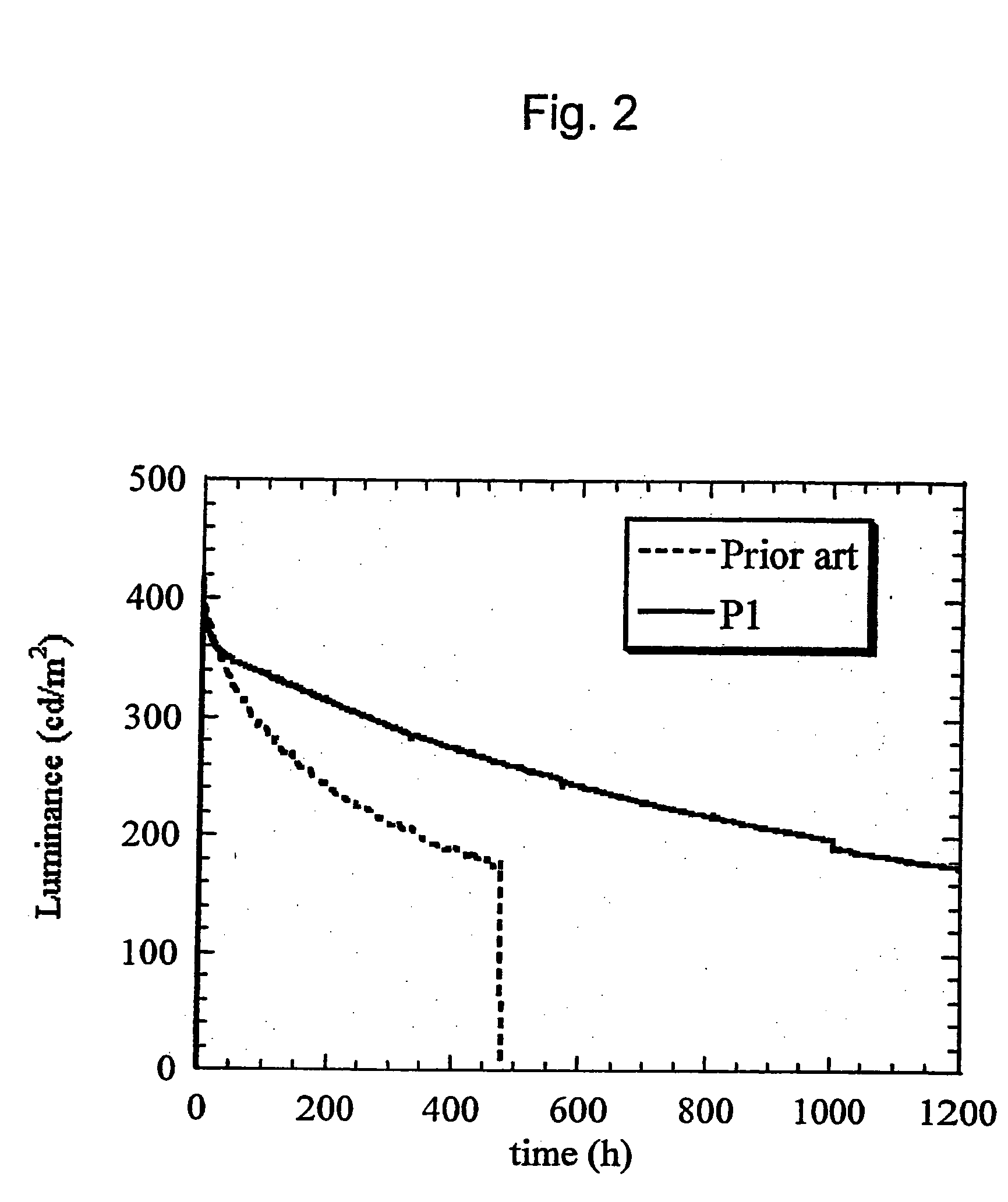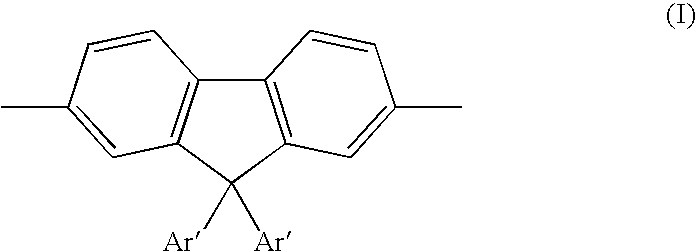Polymers their preparation and uses
- Summary
- Abstract
- Description
- Claims
- Application Information
AI Technical Summary
Benefits of technology
Problems solved by technology
Method used
Image
Examples
examples
Monomer Examples
[0040] Monomers according to the invention were prepared in accordance with the scheme below:
Monomer Example M1: 2,7-dibromo-9,9-diphenylfluorene
[0041]
[0042] In a 3 L flange flask fluorenone (100.006 g, 0.555 mol), phosphorus pentoxide (110.148 g, 0.776 mol) and trimethylphosphate (1200 mL) were mixed. Under mechanical stirring, a solution of bromine (63 mL, 1.23 mol) in trimethylphosphate (200 mL) was quickly added. This clear solution was then heated for 22 hours at 120° C. The mixture was allowed to cool to room temperature, then poured into 3 L of water. When sodium thiosulfate was added (50.045 g) the mixture turned yellow. Stirring was maintained for 1 hour then the yellow solid was filtered. This solid was heated in methanol to remove the mono-brominated compound and gave 176.183 g (98% pure by HPLC, 94% yield).1H NMR (CDCl3) 7.73 (2H, d, J 2.0), 7.61 (2H, dd, J 7.6, 2.0), 7.36 (2H, d, J 8.0); 13C NMR (CDCl3) 142.3, 137.5, 135.3, 127.9, 123.3, 121.8, 109.8...
polymer example p1
[0048] A blue electroluminescent polymer according to the invention was prepared in accordance with the process of WO 00 / 53656 by reaction of 9,9-di-n-octylfluorene-2,7-di (ethylenylboronate) (0.5 equivalents), 2,7-dibromo-9,9-diphenylfluorene (0.35 equivalents) and N,N′-di(4-bromophenyl)-N,N′-di(4-n-butylphenyl)-1,4-diaminobenzene (0.15 equivalents) to give polymer P1:
Device Example
[0049] Onto indium tin oxide supported on a glass substrate {available from Applied Films, Colorado, USA) was deposited a layer of PEDT / PSS, available from Bayer® as Baytron P® by spin coating. A layer of polymer P1 was deposited over the PEDT / PSS layer by spin-coating from xylene solution. Onto the polymer P1 was deposited a cathode consisting of a first layer of lithium fluoride, a second layer of calcium and a third, capping layer of aluminium.
[0050] For the purpose of comparison with P1, an identical device was prepared except that the electroluminescent polymer comprised 10% TFB repeat units (fu...
PUM
| Property | Measurement | Unit |
|---|---|---|
| Fraction | aaaaa | aaaaa |
| Wavelength | aaaaa | aaaaa |
| Wavelength | aaaaa | aaaaa |
Abstract
Description
Claims
Application Information
 Login to View More
Login to View More - R&D
- Intellectual Property
- Life Sciences
- Materials
- Tech Scout
- Unparalleled Data Quality
- Higher Quality Content
- 60% Fewer Hallucinations
Browse by: Latest US Patents, China's latest patents, Technical Efficacy Thesaurus, Application Domain, Technology Topic, Popular Technical Reports.
© 2025 PatSnap. All rights reserved.Legal|Privacy policy|Modern Slavery Act Transparency Statement|Sitemap|About US| Contact US: help@patsnap.com



